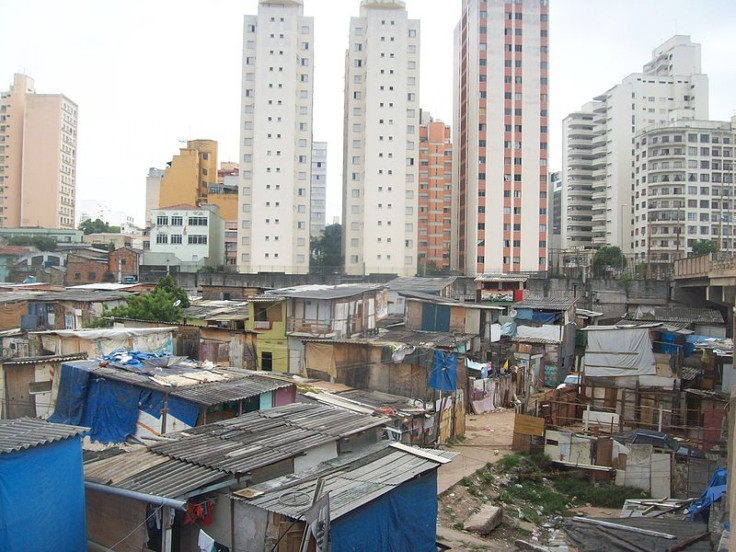Latin America’s Inequality Is Improving; The U.S.Is The Most Unequal Country In The West

Latin America has for a long time held the dubious honor of being the most unequal region in the world: the gap between rich and poor was the highest on the continent, affecting a whole host of factors ranging from economic growth rates to teenage pregnancy to crime.
But not all is lost. Recent trends have shown that things are improving. Based on the Gini index -- the most commonly used measure of inequality, which takes into account the percentages of total income against the number of recipients and expressed the difference between poorest and richest -- Latin America had an average of 54 in the year 2000 (where 0 shows absolute equality and 100 is perfectly unequal), compared to 30 in the European Union or 46 in Asia. A decade later, the number has decreased to 50, the Economist reports.
In the last 10 years, the Gini declined in 14 Latin American countries, with Argentina, Brazil, Ecuador and Panama leading the decrease. Nevertheless, Brazil shows one of the worst inequality situations in the world (54.7), after Honduras (57.0) and Colombia (55.9).
Several reasons may explain this improvement. A fundamental one, as signaled by Shannon O’Neil from the Council of Foreign Relations, is an unprecedented economic stability on the continent. The ups and downs of the 1980s and 1990s have now calmed down. Global demand for the region’s commodities has brought foreign investment that boosted exports.
Latin American countries have also started applying social programs, such as Mexico’s “Oportunidades” and Brazil’s “Bolsa Família,” which have helped improve the living situation of the lower and middle classes. Another striking change was the emphasis Latin American countries have put on education, investing on average a larger share of GDP in schools for the poorest 20 percent of the country than does the United States, according to the Economist.
The positive trend contrasts with what happened in the U.S. America’s Gini coefficient increased by 4 points in the last two decades, placing it above Italy and Japan and a similar level to Turkey. The growth comes not from lower and middle-class families, but from the wealthy increasing their annual income more than 200 percent in the last 20 years -- as opposed to a 37 percent increase in the income for those in the middle.
The Global Post published an interesting study, comparing U.S. cities to countries in Latin America and around the world. Therefore, Ithaca, N.Y., has the same Gini index as Peru (46); Milwaukee, Wis., with Uruguay (45); and Naples, Fl., with Chile (52). In total, the U.S. is now more unequal than 10 Latin American countries, including Mexico, Venezuela and Nicaragua.
Follow me on Twitter: @PReyMallen
© Copyright IBTimes 2024. All rights reserved.




















